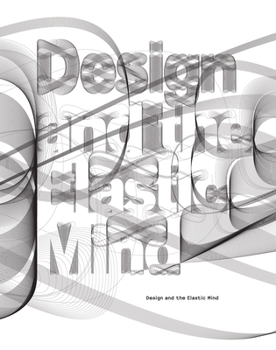Design and the Elastic Mind
Select Format
Select Condition 
Book Overview
In the past few decades, individuals have experienced dramatic changes in some of the most established dimensions of human life: time, space, matter, and individuality. Minds today must be able to synthesize such transformations, whether they are working across several time zones, travelling between satellite maps and nanoscale images, drowning in information, or acting fast in order to preserve some slow downtime. Design and the Elastic Mind focuses on designers ability to grasp momentous advances in technology, science and social mores and convert them into useful objects and systems. The projects included range from nanodevices to vehicles, appliances to interfaces and building facades, pragmatic solutions for everyday use to provocative ideas meant to influence our future choices. Designed by award-winning book designer Irma Boom, this volume also features essays by Paola Antonelli; design critic and historian Hugh Aldersey- Williams; visualization design expert Peter Hall; and nanophysicist Ted Sargent that further explore the promising relationship between design and science.
Format:Paperback
Language:English
ISBN:0870707329
ISBN13:9780870707322
Release Date:March 2008
Publisher:Museum of Modern Art
Length:192 Pages
Weight:1.35 lbs.
Dimensions:0.7" x 7.7" x 9.3"
Customer Reviews
2 ratings
A Eclectic Book, but a bit Over Designed
Published by Thriftbooks.com User , 15 years ago
In a lot of ways this book reminds me of many of the publications that have been put out by COLORS magazine. There is an eccentric encyclopedic quality that makes this book exciting from the very moment you touch. It's virtually impossible to do a random opening and not land on a page that has an element of surprise and novelty. A random opening for me took me to page 31 where I find "MyBio-Reactor Cows" created by Elio Caccavale. Another random opening takes me to "sketch furniture", where the furniture is exactly as it sounds: designed to look like literal 3D interpretations from loose pencil sketches (only the materials are white). Despite the playful novelty of many of the artifacts presented here, there is a sobering perspective offered by the book. All of the work here seems to walk up to the line of diminishing return as far as science and technology goes. It's the line that divides productive progress from over-productive regression. The MyBio Dolls are such artifacts that present this distinction. For this reason, this is a very important book for anyone who is curious about what the future might look like and perhaps what it shouldn't look like. My only criticism of the book is that it passes the point of diminishing return as far as Graphic Design is concerned. The layout and type setting is often slammed against the photography. Stylistically it's cool and thematically appropriate, but also fatiguing on the eyes. Some pages I simply couldn't read without working too hard, which I'm not willing to do -- so I didn't read them. It also results in several spreads in appearing just downright cluttered. But that's my own [...] reaction, and other readers may have little to no issue with getting past such gratuities. These readers will find this book to be a gem. Others will enjoy the book too -- the parts they can read.
Interesting book
Published by Thriftbooks.com User , 16 years ago
This book is a very useful compendium, and a help to better understand what seen in the MoMA Expo. I liked the expo, and I like more the book.






